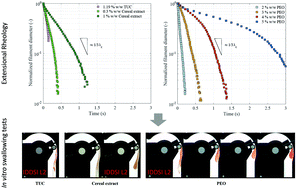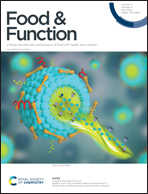The role of extensional rheology in the oral phase of swallowing: an in vitro study
Abstract
Swallowing disorders deteriorate significantly the quality of life and can be life-threatening. Texture modification using shear thinning food thickeners has been proven to be effective in the management of dysphagia. Some studies have recently considered the positive role of cohesiveness, but there is still an insufficient understanding of the effect of the rheological properties of the liquid bolus on the dynamics of bolus transport, particularly when elasticity and extensional properties are combined with a shear thinning behaviour. This study combines steady shear, SAOS and capillary breakage extensional rheometry with an in vitro method to characterize the oral transport of viscoelastic liquids. Bolus velocity and bolus length were measured from exit in vitro experiments using image analysis and related to shear and extensional properties. A theory describing the bolus dynamics shows that the elastic and extensional properties do not influence significantly the oral transit dynamics. Conversely, in vitro results suggest that the extensional properties can affect the transition from the oral to the pharyngeal phase of swallowing, where thin, viscoelastic liquids lead to a fast transit, lower oral post-swallow residues and more compact bolus with a smoother surface, which may suggest a lower risk of fragmentation. This mechanistic explanation suggests that the benefit of the extensional properties of thin viscoelastic liquids in the management of dysphagia should be further evaluated in clinical trials.



 Please wait while we load your content...
Please wait while we load your content...